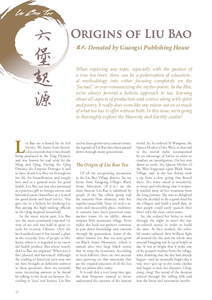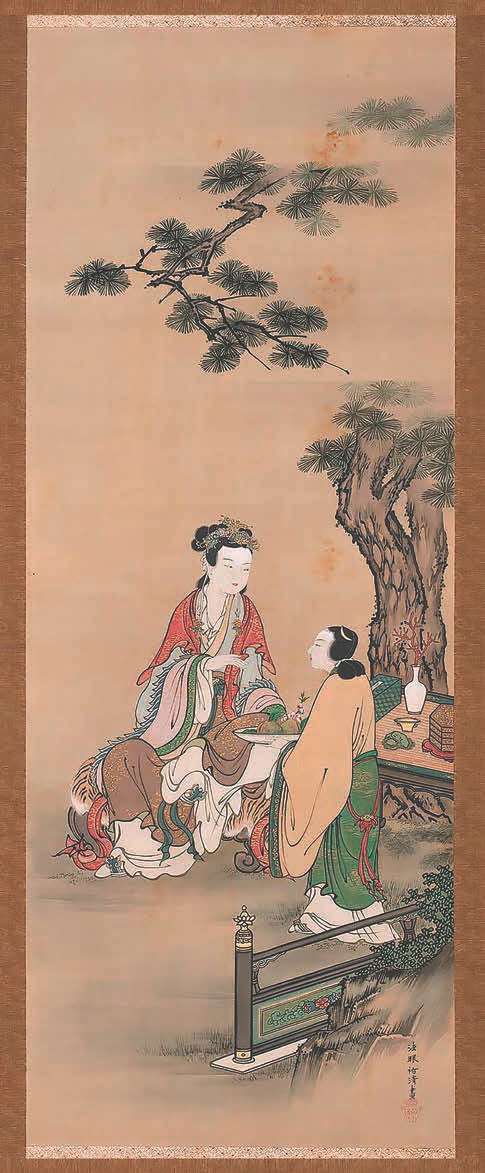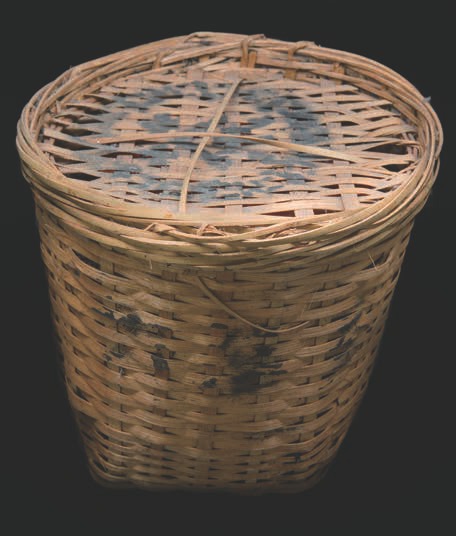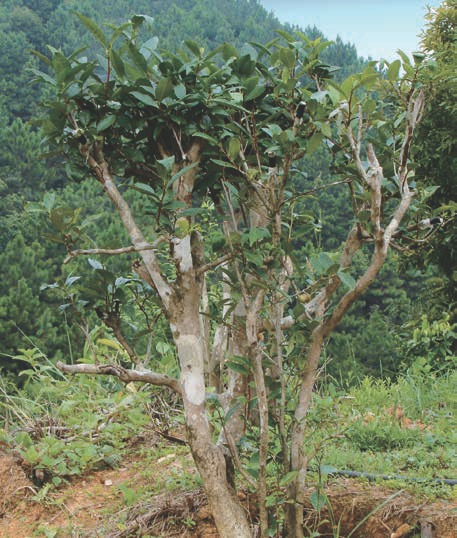
 |
|
Liu Bao tea is famed for its rich history. We know from historical tea records that it was already being produced in the Tang Dynasty, and was known far and wide by the Ming and Qing. During the Qing Dynasty, the Empress Dowager is said to have drunk Liu Bao tea throughout her life for beautification and weight loss, and as a general tonic for good health. Liu Bao tea was also presented as a precious gift to foreign envoys and bestowed upon chancellors as a reward for good deeds and loyal service. This gave rise to a fashion for drinking Liu Bao among the high-ranking officials in the Qing imperial household.
In the more recent past, Liu Bao was the most commonly exported variety of tea and was held in great esteem by overseas Chinese. Over the last hundred years it has earned a place in the everyday lives of people in Malaysia, where it is regarded as an essential health product. But where exactly did Liu Bao tea originate? When was it first planted and harvested? Although the reading of historical texts may not yet have brought us definitive answers to these questions, there are certainly some interesting answers to be found by talking to the local tea farmers. According to local oral history, Liu Bao tea has been grown since ancient times: the legends of Liu Bao have been passed down through many generations.
Of all the tea-growing mountains in the Liu Bao Village district, the tea leaves from Tangping Village's Black Stone Mountain (黑石山) are the most famous. Liu Bao is inhabited by people of the Yao ethnic group and the majority Han ethnicity, who live together peacefully. Since it's such a remote and inaccessible place, traditional customs have been preserved since ancient times; it's an idyllic, almost utopian little mountain village. Even today, the local tea growers continue to pass down knowledge and customs through the generations. Some of the oldest known Liu Bao tea trees grow on Black Stone Mountain, which is named after two large black stones that sit atop the mountain. According to local folklore, there are two ancient trees growing on that mountain that are the original ancestors of all the Liu Bao tea plants alive today.
It is said that a very long time ago, the Jade Emperor wanted to better understand the customs of the human world. So, he ordered Xi Wangmu, the Queen Mother of the West, to descend to the mortal realm accompanied by an entourage of fairies in order to conduct an investigation. On her way down to earth, the Queen Mother of the West happened upon Black Stone Village, and, as she was thirsty, took a sip from a clear spring that flowed there. The water tasted so wonderful, so sweet and refreshing, that it instantly washed away all her weariness from the long journey. She was so delighted that she decided to do a good deed for the villagers and build a small dam, so that people could easily quench their thirst with the clear, sweet water.
So, she ordered her fairies to work through the night to move the many-colored stones in order to build the dam. As they worked, the colorful stones radiated their brilliant light all around the sky, and the whole area around Tangping was lit up as bright as day. It was so bright that it woke one of the peasant women from the village, who, thinking that the day had already begun - and an unusually bright day it was, too - got up to dry some clothes and began to beat her dustpan. Clang, clang, clang! The sound of the dustpan echoed through the rolling hills and into the forest and mountains nearby.

The fairies, hearing the sound and thinking the dawn was upon them, hurriedly abandoned their work and vanished back to the heavens. The many-colored stones, abandoned in midair, fell down to earth and landed beside the village. So, the villagers didn't get their dam, but beside the stream there now stood a beautiful, multi-colored cliff.
When the Queen Mother of the West saw that her good deed had not come to fruition, she ordered the fairies to place two magical tea seeds into the cracks of the many-colored cliff, and set a fairy dog to guard them. Many years passed, until finally the immortal tea plants began to grow. After so many seasons of lashing rain and beating sun, the cliffs were no longer rainbow-colored, but had turned completely black. Having finally accomplished his duty, the faithful little fairy dog left an image of himself in stone on the cliff-top; then he, too, bid the mortal world farewell and returned to the heavens.
The two magical trees grew lush and green, and every year the villagers would scale the cliff to harvest the tea so they could brew it for their visitors. The visitors had never tasted such pure, rich, and mellow tea, and smacked their lips in praise. When the villagers drank the tea after a hard day in the fields, their thirst was instantly quenched and their throats soothed. Whenever they went up the mountain to chop firewood or harvest mushrooms, they would always bring a big gourd full of the wonderful tea. The people of Black Stone Village have never forgotten that black stone cliff and those two fairy trees: this delightful folktale has been handed down through the generations and is still told today.
A very long time ago, so the story goes, lived a young man and a young woman who were very much in love. When they met, they would sing beautiful duets together - that was how young people courted, in those days. They wanted to get married, and the young man was busy worrying over how to pay a suitable bridewealth to her family, as was the custom, when he suddenly received a letter from his beloved. In it was written a song: "Do not worry, elder brother dear; your little sister's family for riches does not care. With a true heart you must come to fetch me, and bring a small basket filled with ten jin of tea." (It was quite usual for all young people to call each other "brother" and "sister" as terms of affection.) When the young lad read the letter he was at once both overjoyed and anxious. The joyous part was that the family of his wife-to-be didn't require money or expensive gifts; but the worrying part was this: ten jin of dry tea leaves was enough to fill a very, very large basket - how was he supposed to carry it in a "small basket" to his beloved's home? He thought hard for three days and three nights, but he was still stumped.
After all this time, the thoughtful young girl guessed her sweetheart's worries, so she cleared her throat and sang out to him: "Your future wife will give you a test; a clever wife always knows best! I cannot get married without the tea; dear brother needs some help from me!" The clever girl told him to boil a half-full pan of water and place a bamboo steamer on top, then to press the Liu Bao tea leaves into the steamer as they softened. In this way he pressed the leaves down layer by layer, and in no time at all the ten jin of tea leaves were compressed into a beautiful, neat cake of tea. And so it was done! The young man easily put the tea cake into the small basket and carried it to his fiancée's family home in high spirits, singing all the way. From that day on, people carried on the tradition of compressing tea into cakes by steaming it, and they still do to this day.
Although we have no way of knowing whether these legends sprang from real events, these two stories certainly do tell us a few things: firstly; that Liu Bao tea originated in Black Stone Village. Secondly, the fact that these stories have been passed down via oral tradition, rather than in written form, confirms that they originate from a historical period before the local people had much contact with the wider world, and before the society became literate. And lastly, they express the importance of Liu Bao tea to the generations of tea growers who have lived in the area and their sincere gratitude and esteem for the mountains, trees, and leaves that have such a lasting presence in their lives.


The two magic trees from the Liu Bao story are immortalized in legend as the ancestors of today's Liu Bao tea plants. According to some of the elderly inhabitants of Black Stone Village, there really are two such majestic old tea trees growing somewhere on the mountain, although they're very hard to find. The vegetation on Black Stone Mountain is dense, verdant subtropical rainforest, with tea plants growing wild along the roadsides, so there are a lot of places where you can find Black Stone tea trees. Most of these wild tea trees have trunks no wider than a largeish coin in diameter, and they grow across the entire mountainside. As far as we know, all these wild tea plants may well be the descendants of those two ancient monarchs, which have gradually grown and multiplied over the generations.
As for the different varieties of Liu Bao tea plant, some of the local tea growers say that the original plants came from Hunan Province's Jianghua and Dao Counties two hundred years ago, arriving in Liu Bao via Babu in Guangxi's He County, and are of the variety known in Chinese as "zhuye (櫧葉)." This theory certainly has some evidence behind it: zhuye tea plants also grow in Hunan Province, and the black tea (heicha) from Anhua and other parts of Hunan is produced using a very similar method to Liu Bao.
However, some experts disagree with this theory, as some of the existing tea trees in Liu Bao Village are several hundred years old, with trunks reaching 30 - 40 centimeters in diameter, which is evidence of a tea-growing tradition stretching back much further than two hundred years. As for the similarity in production technique, this could simply indicate that there was some contact between early tea growers in Hunan and Guangxi provinces, owing to their relative geographical proximity. Nonetheless, the possibility that the tea varieties and processing techniques may have come to Liu Bao Village from Hunan hasn't been entirely ruled out. After all, Yunnan Province is considered to be the birthplace of the world's tea, so it's quite possible that teas and techniques might spread outwards along the country's many waterways. So, while we have yet to definitively establish the exact origins of the Liu Bao tea plant variety or the evolution of the manufacturing process, it's a fascinating topic that provides tea experts and scholars with plenty more scope for investigation.
